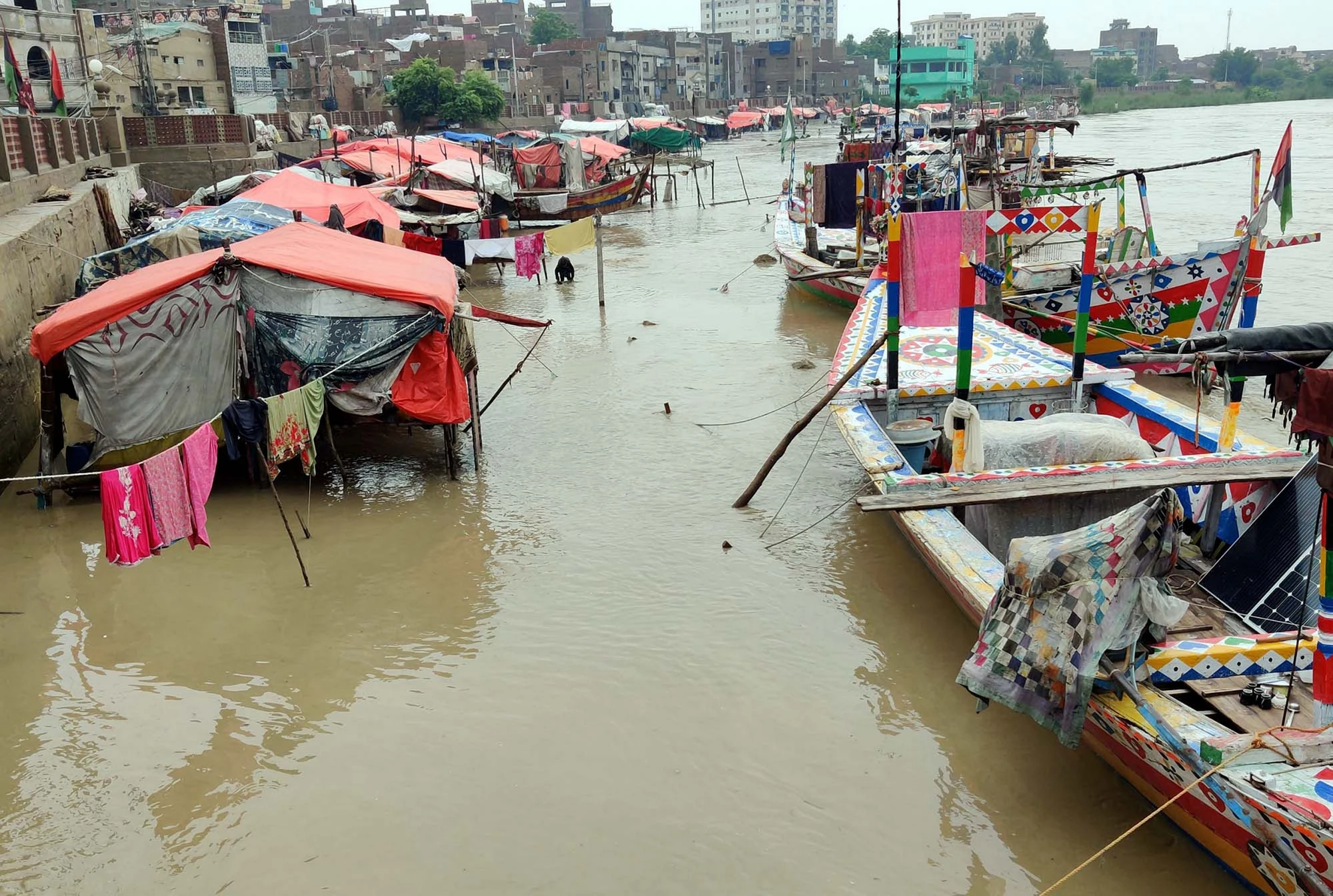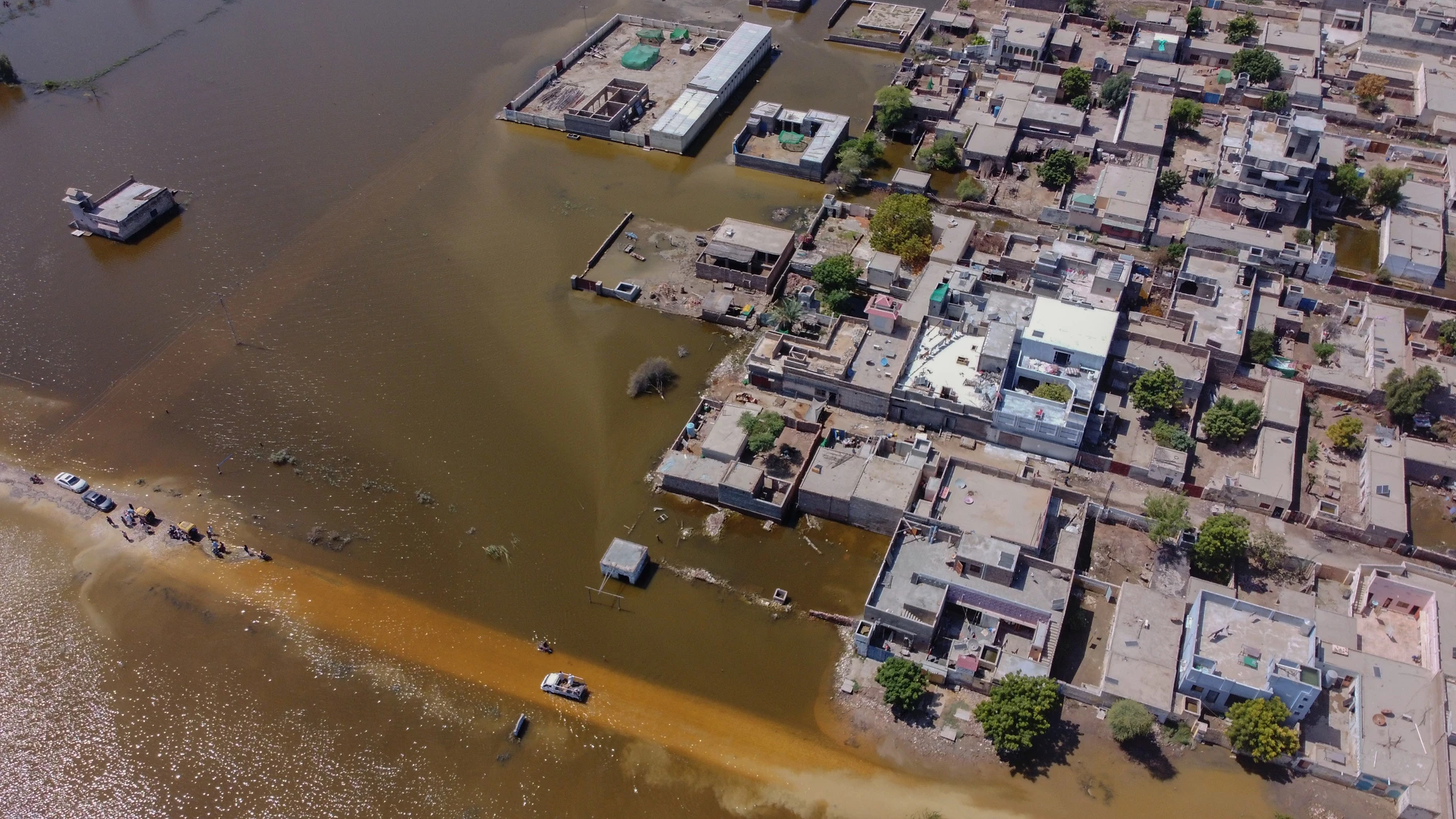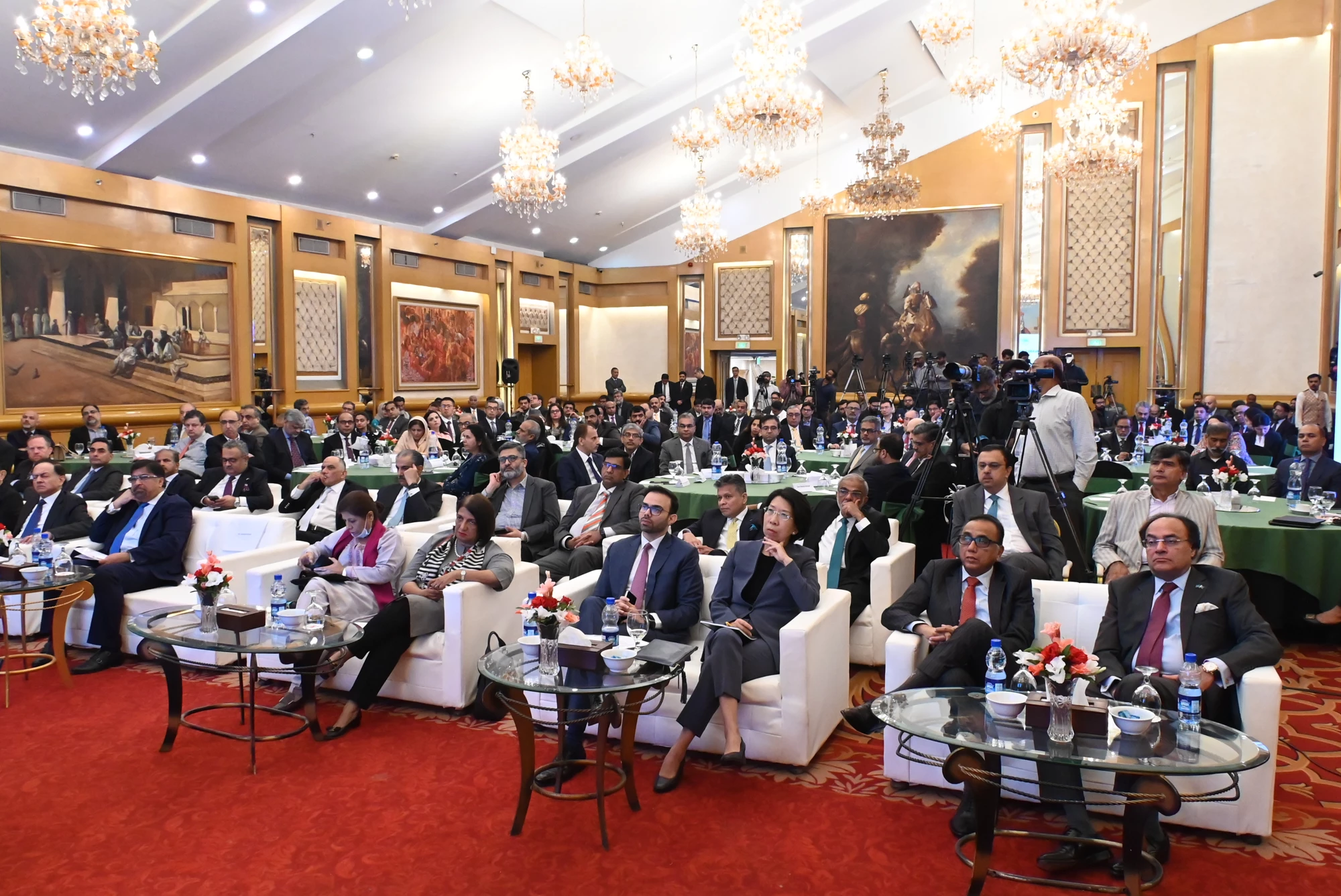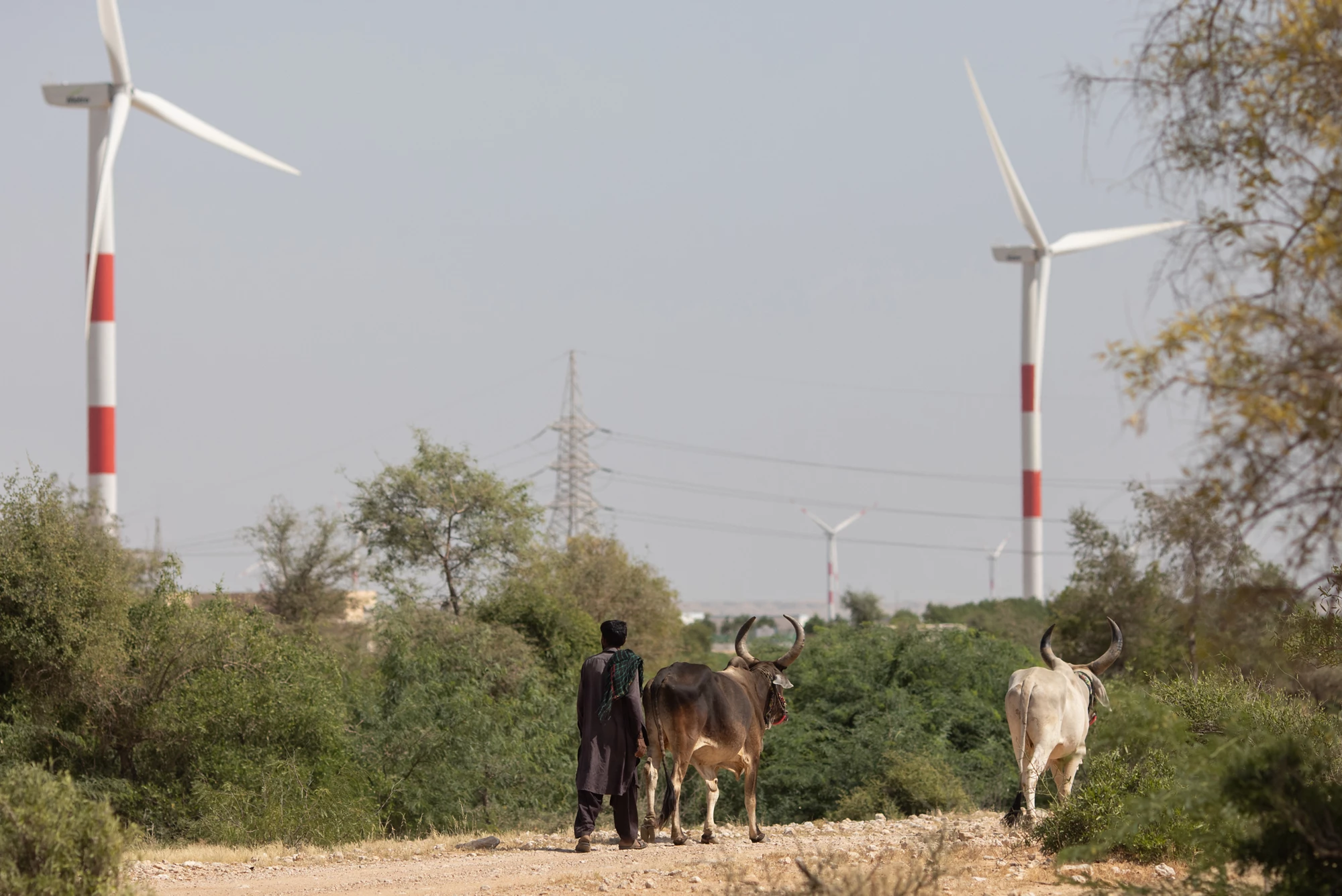By Payam Akram and Sunita Anne Rappai
IFC’s Pakistan Sustainable Banking Project is a groundbreaking initiative that is helping the country’s financial sector manage prevailing environmental, social and governance (ESG) risks across their lending portfolios. The project has been implemented in partnership with the country’s central bank and includes a comprehensive manual with tools & checklists that helps banks address risk issues and ultimately foster a greener finance sector.
Pakistan is no stranger to the threat of climate change. In the past 25 years alone, it has faced over 150 extreme weather events and man-made disasters. In 2022, catastrophic floods left a third of the country submerged, 8 million people displaced, and $30 billion worth of damages inflicted on the infrastructure, agriculture, business, housing, and livestock sectors.
With the country contributing just 1 percent to global greenhouse gas emissions, the floods also highlighted the extent to which Pakistan is disproportionately impacted by climate change. Without a regulatory environment promoting sustainable, climate resilient practices, the country's vulnerability to climate risk will continue to increase.
That has led to growing calls in Pakistan to better manage environmental, social and governance (ESG) risks—particularly in the financial sector. By helping to prevent damage to the country’s environment, biodiversity, and natural resources, financial institutions can help mitigate the impact of climate change.
 2022 Flooding in Pakistan. Photo: Shutterstock
2022 Flooding in Pakistan. Photo: Shutterstock
The country took a step forward in this direction in 2015, when the State Bank of Pakistan (SBP) joined IFC’s Sustainable Banking and Finance Network (SBFN). In 2017, the SBP issued its pioneering Green Banking Guidelines, which laid out an initial roadmap for green banking in Pakistan, including ESG risk management.
To flesh out these guidelines and implement them in line with global best practices, the SBP called on IFC for help – leading to the introduction of IFC’s Pakistan Sustainable Banking project a year later.
“The SBP had taken great strides in recognizing the importance of greening Pakistan’s financial sector, but they needed help in translating this into practical steps for banks to adopt,” says IFC’s Wei Yuan, who led the project. “Because the country’s banking industry is highly regulated and steered by the central bank, we saw there was real potential to change the way the sector approaches sustainability.”
While the majority of banks were aware that adopting ESG practices could help them avoid fines, litigation, reputational risks, and reduce the volume of non-performing loans, many were also resistant to conducting the due diligence necessary – or were simply unfamiliar with the process, says Wei.
A Manual for Change
To address these gaps, a key part of IFC’s project focused on helping SBP develop and implement a pioneering Environmental and Social Risk Management (ESRM) manual, with user-friendly tools and checklists to enable banks to address risk issues across their lending and investment portfolios.
 Participants at a Train-the-Trainer session on the ERSM manual. Photo: Faizan Muhammad Shamsi
Participants at a Train-the-Trainer session on the ERSM manual. Photo: Faizan Muhammad Shamsi
Afifa Raihana, Senior Environmental Specialist at IFC, says such climate risk-related due diligence “is a first for banks in Pakistan. Addressing these risks will enable banks to reduce losses over time and ultimately increase their profitability.”
The manual was launched at a high-profile national Sustainable Banking Conference in November chaired by the SBP governor, Jameel Ahmed, and attended by over 150 banking representatives, including the CEOs of all the country’s banks. To ensure its adoption, the project also rolled out seven Train-the-Trainer sessions across Pakistan.
In addition, with IFC support, SBP has introduced a set of ESG performance indicators to continuously track banks’ improvement over time, aligned with regulatory requirements and global best practices. This is a new approach that can be replicated in other markets.
What risks does the ESRM manual help banks address?
Environmental risks: pollution, climate risks (drought, floods), loss of biodiversity, ecological degradation.
Social issues: child labor, labor rights, occupational health and safety (OHS), land acquisitions and resettlement, indigenous people’s rights, community health, safety and security.
The feedback from leading banks like Bank Alfalah and HBL that participated in the project has been very positive.
“IFC’s guidance and insight was a huge benefit,” says Muhammad Sohail Haider, Head of Environmental Risk and Green Banking at Bank Alfalah. “Although it may take time to change prevailing mindsets about ESG, every country should take measures to reduce environmental degradation.”
Ahmad Saeed, Head of Social and Environmental Management Systems at HBL agrees. “Now that the ERSM manual has become an industry standard, it’s much easier for us to convince clients to comply,” he adds. “With banks beginning to prioritize climate-friendly projects and being mindful of ESG risks across their portfolios, I am optimistic this project will help address Pakistan’s climate risks.”
 2022 Flooding in Pakistan. Photo: Shutterstock
2022 Flooding in Pakistan. Photo: Shutterstock
IFC is considering building on the project’s success by expanding ESG frameworks into Pakistan’s capital markets in coordination with the country’s Securities and Exchange Commission and the Pakistan Stock Exchange.
“The Sustainable Banking Project is a great example of how IFC can change the way banks in emerging markets consider sustainability issues by including ESG and climate risks in their decision-making and working closely with central banks,” says Wei.
“Ultimately, a greener banking system is critical – not only to reduce the vulnerability of the financial sector to environmental risk, but to help make economies more climate smart, and safeguard lives and livelihoods.”



